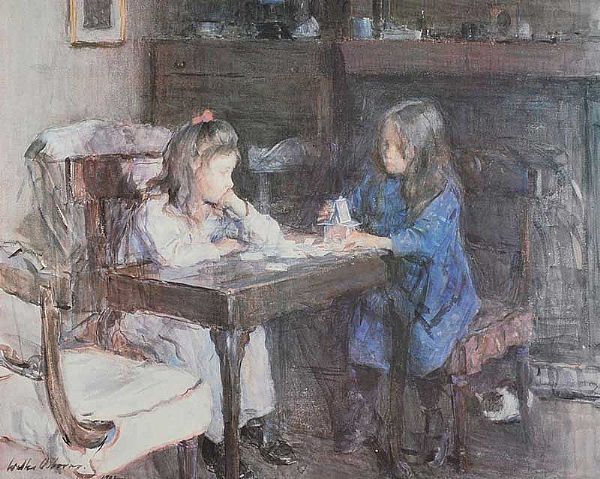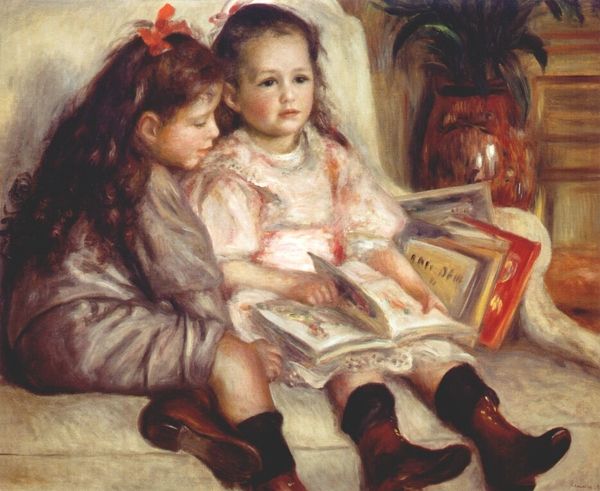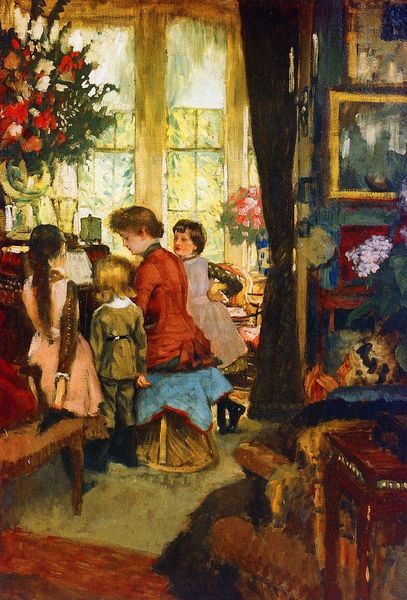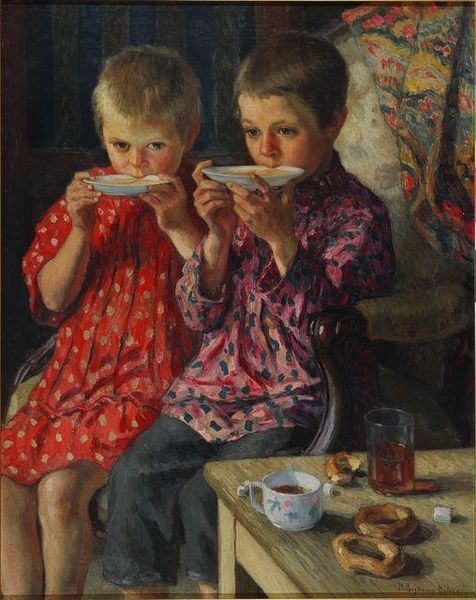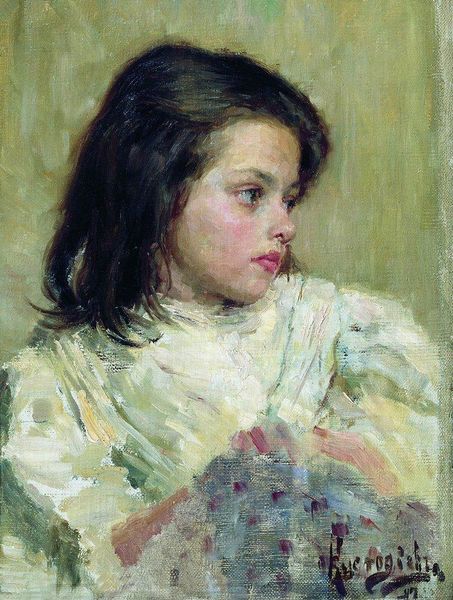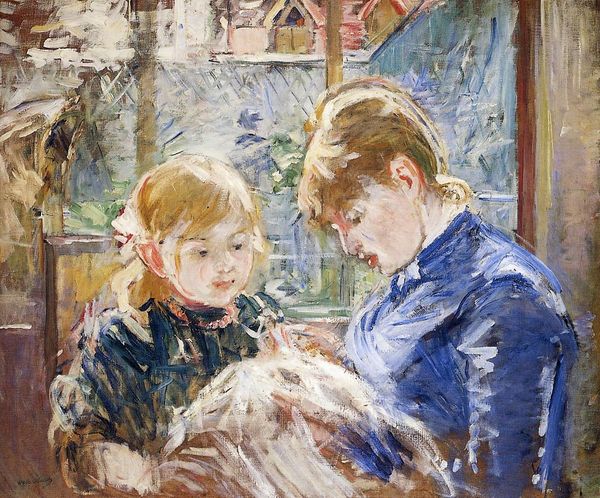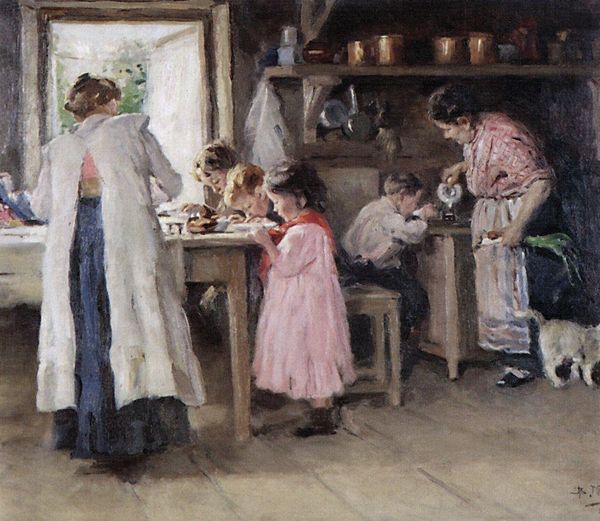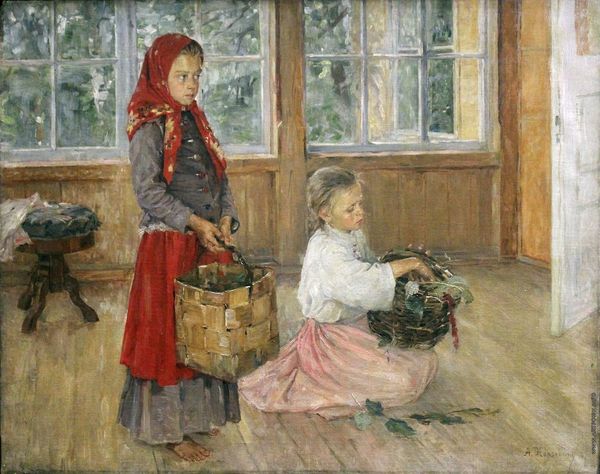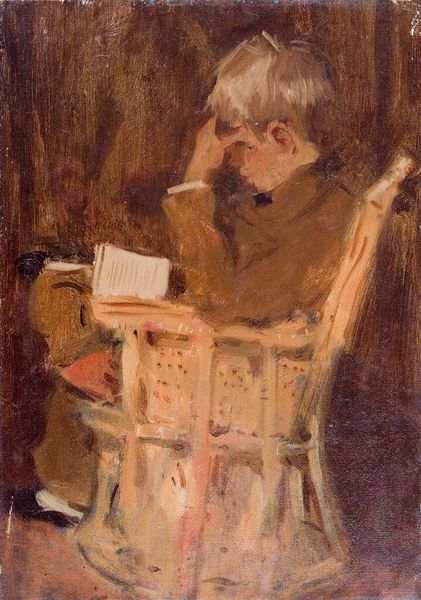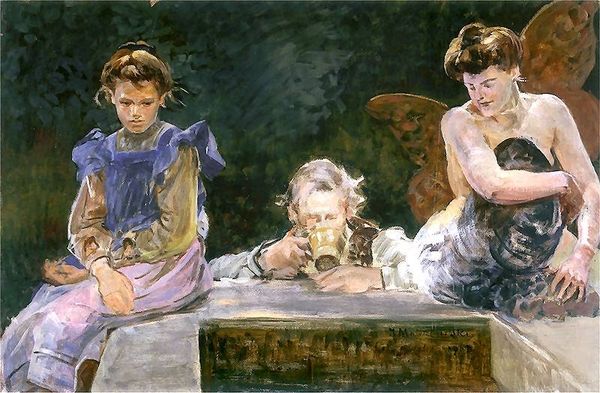
#
abstract painting
#
impressionist painting style
#
impressionist landscape
#
possibly oil pastel
#
oil painting
#
acrylic on canvas
#
underpainting
#
painterly
#
painting painterly
#
fine art portrait
Copyright: Public domain
Curator: I am intrigued by the artwork "Children playing in the Workshop" painted by Konstantin Makovsky around 1880. The scene radiates warmth; it captures two children immersed in their games amidst what appears to be a painter’s workspace. I’m struck by the texture – the materiality seems so important here. What jumps out at you initially? Editor: I love the scene’s intimacy. The brushstrokes look so casual yet so deliberate. The children, presumably in the artist's family, are engaging with simple toys and found objects, the detritus of their father’s studio. The contrast between this innocence and the tools of artistic production surrounding them is striking. What do you make of that contrast? Curator: Well, I'm particularly interested in this concept of the 'workshop.' Consider this as the point where labor and leisure intertwine. Here, we see the tools, the canvases, the physical space devoted to art-making. It's not romanticized, it’s real – even gritty. The children playing amongst the tools… What statement is being made, and who exactly benefits from it? Does this scene offer a glimpse into the commodification of art itself? Editor: You’re pushing me to see beyond just the surface. The materials present – the half-finished paintings, the wooden floor – speak to the economic realities of the time. Does Makovsky's depiction challenge our assumptions about high art versus the everyday life that produces it? Curator: Exactly! By including the children, he collapses that distinction, inviting us to consider the societal support necessary to create art. Whose labor, literally and figuratively, sustains artistic creation? Is the art separate from or intrinsic to social labor, economic capital, or its audience's capital? Editor: I’ve learned to consider the painting not just as an image but as an object reflecting the means of its own production. Thanks for opening my eyes to the socioeconomic context ingrained in art. Curator: And I think I learned from you by listening closer to the emotional narrative the painting presents, which I hadn’t realized as deeply. We must also remember how profoundly paintings influence the cultures in which they exist.
Comments
No comments
Be the first to comment and join the conversation on the ultimate creative platform.
